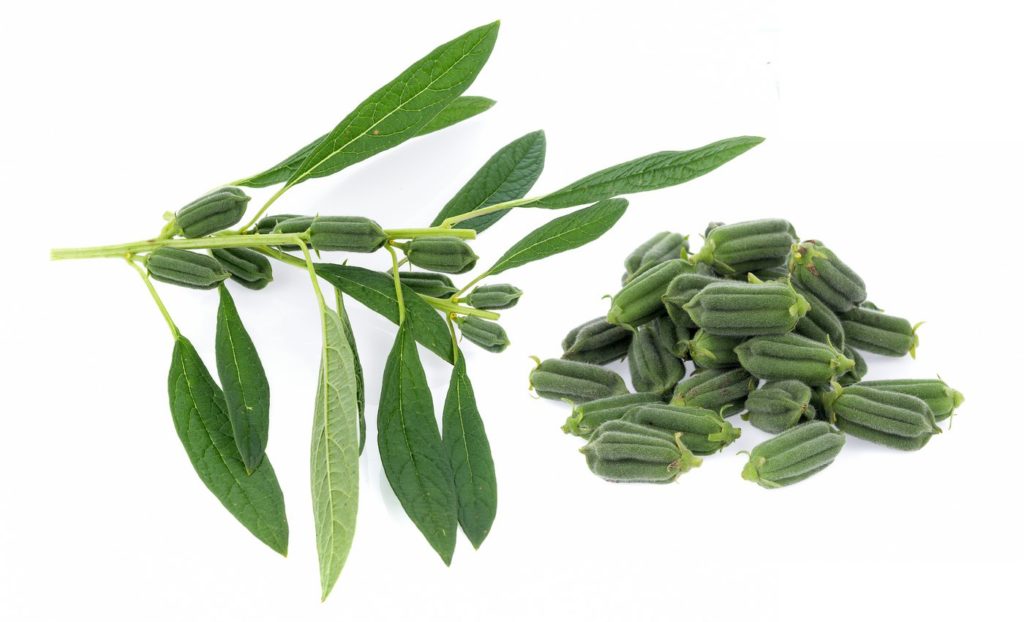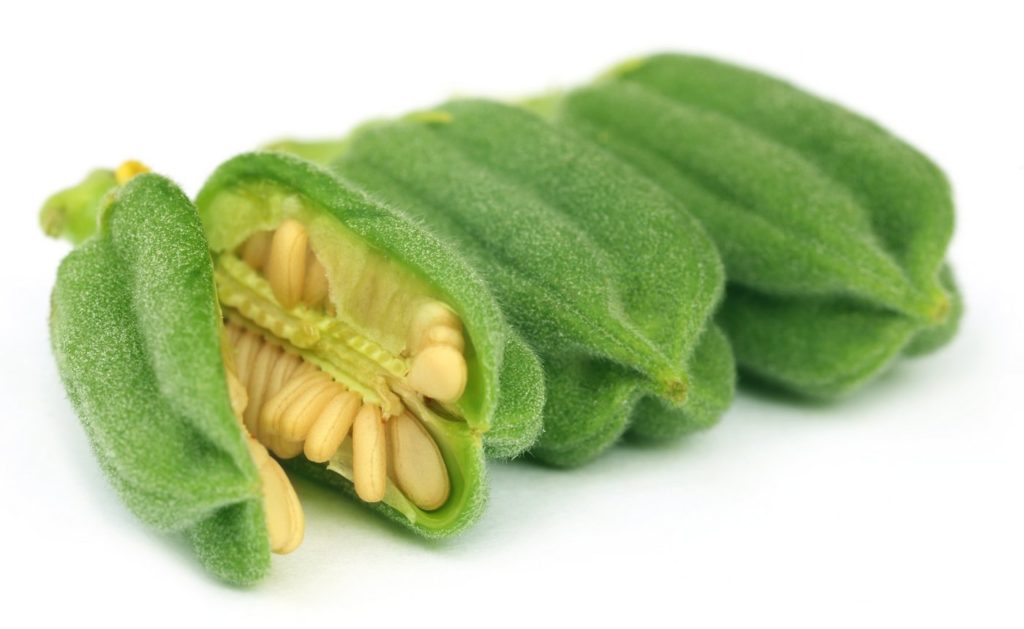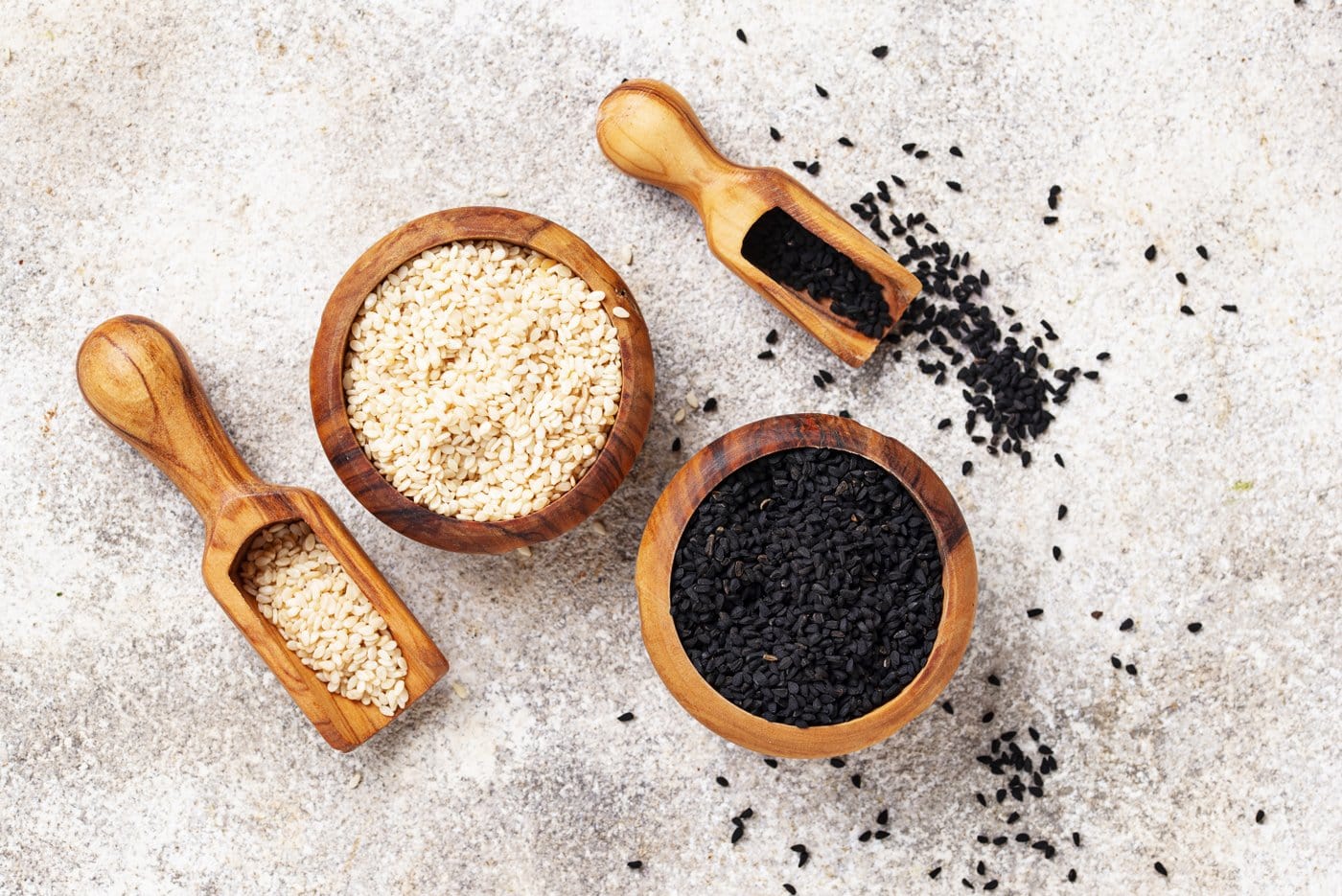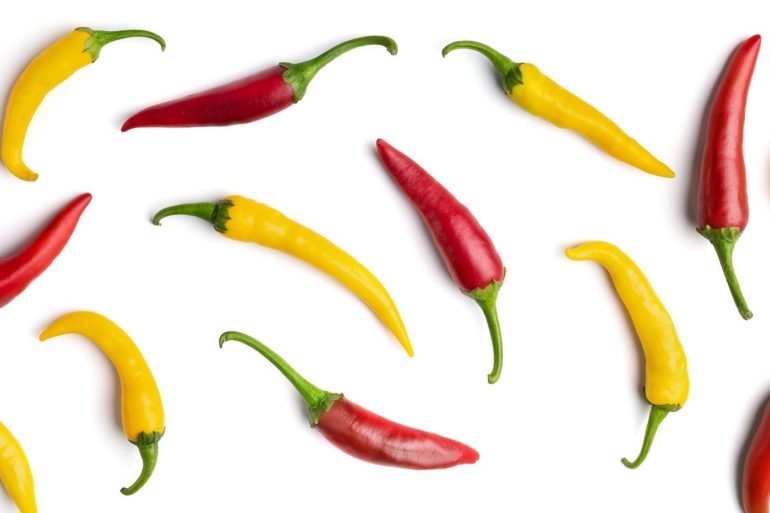What is a sesame – like, what grows from a sesame seed?
If you have sesame seeds, what will they actually grow into? Put simply: What is a sesame plant like? (Hat tip to Mitch Hedberg for the original question.)
Yes, there is such a thing as a sesame… plant.
The sesame in the seed
Apart from making a very important appearance on bagels and hamburger buns, sesame seeds are highly prized for the oil they produce. Sesame seeds are also often used in sushi, to make tahini (sesame paste, which is also one of the ingredients in hummus), in the sweet treat halvah, and to season other foods.
The major behind-the-scenes player that provides all of those yummy sesame seeds and sesame oil is Sesamum indicum — a fairly ordinary-looking flowering plant with little pods, as you can see below. It has broad leaves and grows to be 3 to 6 feet tall, depending on growing conditions and the variety.

And as humble and tiny as they look, sesame seeds are nutrition-packed — the seeds contain about 25% protein along with about 50% oil, which is rich in Omega-6 fatty acids. In addition to offering you a healthy dose of calcium, iron, magnesium and phosphorus, the seeds are a very good source of copper and manganese. (See more nutritional data here.)
Striking oil
The Thomas Jefferson Agricultural Institute in Missouri notes that sesame seeds are unusually high in oil, and “Sesame is a fairly high value food crop, being harvested both for whole seed used in baking, and for the cooking oil extracted from the seed.”
In fact, in Thomas Jefferson’s garden book, the former president wrote of sesame oil, “I do not believe before that there exists so perfect a substitute for olive oil.”
According to the Texas AgriLife Research & Extension Center, one notable characteristic of sesame oil is its stability and its resistance to rancidity. This strength is thanks to its high level of the antioxidants sesamin, sesamolin and sesamol.

The sesame plant’s roots
Some of the earliest mentions of the sesame seed come from the ancient lands of Babylon and Assyria (both now part of Iraq), where it was a prized oil crop more than four millennia ago. Assyrian tablets from 4,300 years ago describe how the night before the gods created the world, they ate bread and drank sesame wine.
But the sesame seed is older still. Sesaco, a company working to commercialize sesame production, say that there are archeological remnants of sesame dating to 5,500 years ago in the Indian subcontinent. Other research tells us that around the same time, sesame oil was burned as a light source in China.
Worldwide, the top producers of sesame plants are China, India and Myanmar — and in America, many of the crops come from Texas, Arizona, Oklahoma and Kansas. The downside to sesame seed production is that the seeds normally burst out of their pods with even the slightest touch (which is also the origin of the saying, “open sesame”), making them very tough to harvest — both historically and in modern times.
New varieties have, however, been recently cultivated to help the plant retain the seeds, simplifying the whole process.
Finally, a bit of trivia: There are between 140,000 and 170,000 sesame seeds in every pound.







